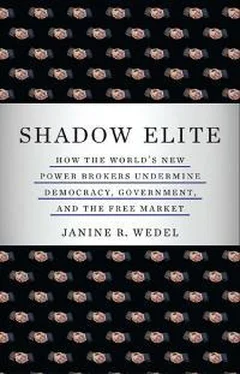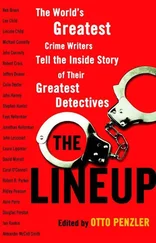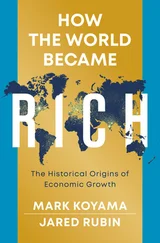Those exhibiting flexian features first revealed themselves to me as I observed both native and foreign operators during the so-called transition to democracy, as they facilitated and profited from the changes under way. The edgy players who adapted to the new environment with the most agility and creativity, who tried out novel ways of operating and got away with them, and sometimes were the most ethically challenged, were most rewarded with influence. In the study of foreign aid I undertook in the 1990s, these traits were exhibited in abundance. I saw how the overlapping roles, networks, and sponsors of the actors involved in the aid process were crucial to understanding how certain high-priority aid efforts played out.
Probably nowhere else could flex activity become as integral a part of changes under way and also mingle with global transactions than in the post-Soviet empire. There, legacies of a militarized economy and secret police combined with collapsed command systems, law subordinated to politics, and informal networking, not to mention Western-promoted radical privatization schemes, to accrue spoils to a connected few. There, as well, entire realms of financial practice were created and money laundering reached new heights. Some players who cut their teeth there have taken their skills beyond the region, plying their trade in a global environment where huge sums of money, off the books and largely unmonitored and unregulated by any institution, flow freely and lavishly.
The people I came to call flexians would soon appear on the world stage. Some of them operated across borders in the manner of global elites, international high fliers who ally more comfortably with their fellow global elites than with their own countrymen. In addition to the cross-pollination of practices—and not necessarily “best” ones—among such elites, parallel processes also developed as flexians, transmuting and changing their colors as necessary, carried the tradition of “the fix and the deal” to new levels. Like masterful dancers who push beyond accepted steps and recognized routines, flexians perform on the edge, trying out and inventing new patterns. These players live symbiotically within the system, quietly evading and stretching its rules as they help mediate its transformation. The new system they help fashion blurs the boundaries between the state and private sectors, bureaucratic and market practices, and legal and illegal standing. Ironically perhaps, the formerly communist world and the maneuverings that flowed from its transition away from communism proved an ideal training ground for examining governing, power, and influence in the United States at the dawn of the twenty-first century. There the new era of blurred boundaries is marked by privatization and contracting out, and a resulting fusion (and confusion) of state and private power.
Beyond Old Boys
Flex nets (like flexians) arose to fill a niche that is new. Just as flexians cannot be reduced to mere lobbyists, neither can flex nets be reduced to interest groups, lobbies, old-boy networks, and other such groupings in American society, government, and business. Flex nets are far more complex. Like interest groups and lobbies, flex nets serve a long-established function in the modern state—negotiating between official and private. But while flex nets incorporate aspects of these and other such groupings, they also differ from them in crucial ways—and those ways are precisely what make flex nets less visible and less accountable.
Four key features define both flexians as individuals and those influencers who work together as a flex net. Flexians functioning on their own exhibit the modus operandi embodied in all four features discussed below, as does a flex net as a whole. Because members of a flex net benefit from the actions of the collective, pooling resources and dividing labor, not all members of a flex net must exhibit these features individually.
One, personalizing bureaucracy .Flexians operate through personalized relations within and across official structures, and act primarily based on loyalty to people, not organizations, to realize their goals. They use the formal organizations with which they are affiliated—governmental, corporate, national, or international—but their chief allegiance is to themselves and their networks. Flexians work bureaucracy to their advantage, preferring to operate by means anathema to official, legal, and procedural objectivity—the hallmark of the modern state that harks back to the classic model elucidated by Max Weber, the influential German sociologist.
Members of a flex net, with their loyalty to people over organizations, form an exclusive informal network that serves as an intricate spine —the corresponding (first) feature of flex nets. Flex nets draw their membership from a limited circle of players who interact with each other in multiple roles over time, both inside and outside government, to achieve mutual goals. While their roles and environments change, the group provides continuity. For instance, as detailed in Chapter 6, members of what I call the Neocon core, an informal group of a dozen or so members and a successful flex net, have worked with each other in various incarnations for some thirty years to realize their goals for American foreign policy via the assertion of military power. Whereas interest groups promote a political cause or defend the agendas of a particular group, and lobbies offer politicians support and resources in exchange for preference in policies, flex nets are not formal or permanent entities. Their existence is unannounced, and they do not seek to incorporate themselves as such. Moreover, members of flex nets are united by shared activities and interpersonal histories. “Interest groups” and “lobbies” do not convey the ambiguous state-private networks of flex nets, which coordinate power and influence from multiple vantage points—often far removed from public input, knowledge, or potential sanction. 23
Two, privatizing information while branding conviction .Flexians believe—in any event, convincingly assert—that they have complete understanding of the cause that propels them into action. They have a theory. And theory that serves as an organizing catalyst is crucial in times of rapid and intense social change, as Vladimir Lenin famously pointed out. More than the opportunists who have benefited from blurred boundaries and disorder throughout history, flexians operate in today’s environment of perpetual change. They play on loopholes produced by the four transformational developments. Among them is the vacuum of information left at the end of the Cold War as states could no longer lay exclusive claim to official information. Being frequent gatekeepers of inside access and “knowledge” enables flexians to brand information and control its applications. They are highly skilled at using the media to sell solutions to economic, political, and social ills, sometimes along with their own role in those solutions, so they are also able to convince others of their unique understanding in an uncertain world, one that often takes them on faith. Thus, to keep going on and on (to borrow Celine Dion’s phrase), flexians offer easy-to-grasp stories and parables to a public yearning for simple explanations. 24
When such influencers work together in a flex net, they exhibit shared conviction and action—the corresponding second feature of flex nets. Flex nets, like military elites and religious cults, induce obligation and loyalty through shared ideals and ordeals. Their goals as a unit are ideological and political, as well as to varying degrees financial and societal as a unit or a subset thereof. Members of a flex net act as a continuous, self-propelling unit to achieve objectives that are grounded in their common worldview, and to brand that view for the public. For instance, a cornerstone of the Neocon core’s success over several decades has been the skill of its members at challenging official U.S. intelligence, creating alternative versions, and branding them as official and definitive for politicians, government, and the media. 25
Читать дальше












